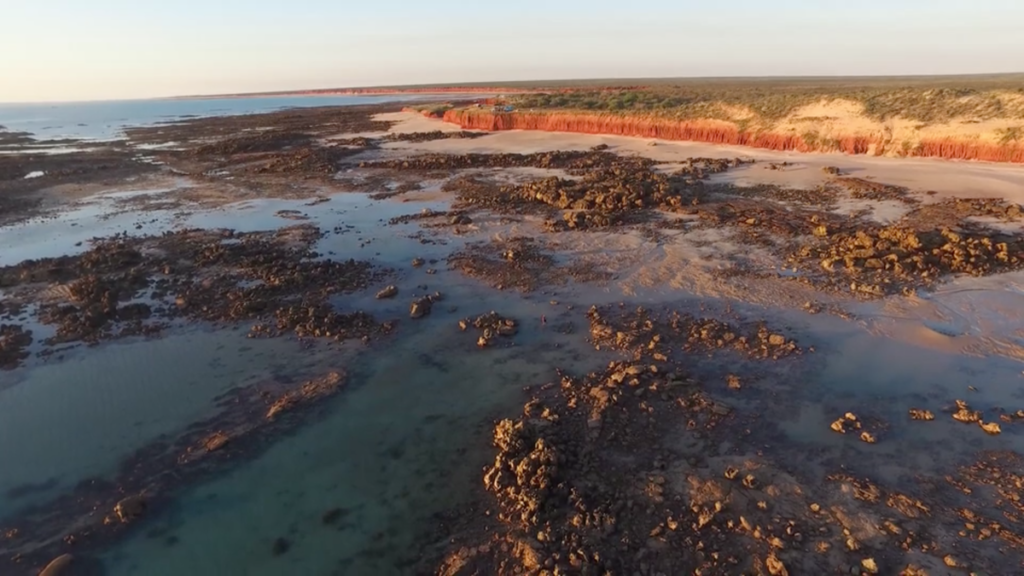The Largest Dinosaur Footprint Ever Has Been Found in Australia’s ‘Jurᴀssic Park’
On a 25-kilometer (15.5-mile) stretch of coastline in Western Australia, there lies a prehistoric treasure trove.
Thousands of approximately 130-million-year-old dinosaur footprints are embedded in a stretch of land that can only be studied at low tide when the sea – and the sharks and crocodiles that inhabit the region – can’t hide them.
What scientists found there is truly special, according to a study recently published in The Journal of Vertebrate Paleontology.
“Nowhere else in the world has as many dinosaurs represented by a track that Walmadany does,” Steve Salisbury, a paleontologist at the University of Queensland and lead author of the study, says in a video describing the area.
Included among those many dinosaur tracks is the largest dinosaur footprint ever found. At approximately 1.75 meters long (about 5 feet, 9 inches), the track came from some sort of giant sauropod, a long-necked herbivore.

“There’s nothing that comes close” in terms of size, Salisbury tells CNN.
But there’s far more there than one giant footprint.

“We see a unique dinosaur fauna that includes things like stegosaurs and some of the biggest dinosaurs to have ever walked the planet, gigantic sauropods,” Salisbury says in the video.
This was the first evidence of stegosaurs ever found in Australia.
There are also tracks from meat-eating theropods that walked on two feet and left three-toed prints with shapes similar to those many remember from the film Jurᴀssic Park.
In this case, the three-toed prints have a special significance: in local lore, the tracks belong to Marala, an Emu man who journeyed through the region, giving laws that dictated how people should behave.

In a press release announcing the findings, Salisbury also describes the various other types of dinosaur tracks discovered.
“There were five different types of predatory dinosaur tracks, at least six types of tracks from long-necked herbivorous sauropods, four types of tracks from two-legged herbivorous ornithopods, and six types of tracks from armored dinosaurs,” he says.

The University of Queensland researchers were brought in more than five years ago by the aboriginal Goolarabooloo community, who are the traditional custodians of the area and have known about the tracks for many years.
The Western Australian Government had selected the region as a processing site for liquid natural gas, and the local groups wanted experts to help protect the region and show what was at stake.
The area was designated a National Heritage site in 2011, and two years later it was announced that the gas production project wouldn’t happen.

Since no equipment could be left out when the tide came in, the researchers used drones to map the area with digital pH๏τography and laser scans.
According to Salisbury, they have spent more than 400 hours out on the reefs.
“It’s such a magical place – Australia’s own Jurᴀssic Park, in a spectacular wilderness setting,” he says in the video.





